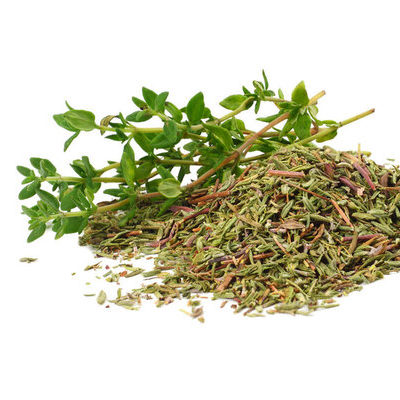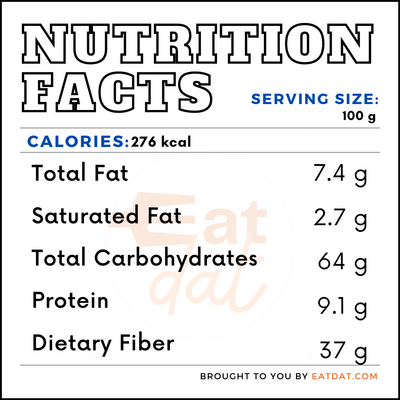
Thyme
What is Thyme?
Thyme (Thymus vulgaris L) is a Mediterranean herb used to season dishes. It belongs to the Labiatae (Lamiaceae) family and is also a relative of oregano. This herb has small leaves which grow on a thin stem.
- Thyme can commonly be found in fresh, dried, or oil form.
- In the kitchen, thyme is often used in soups, stews, and with vegetables.
Eight common varieties of this herb are:
- Lemon
- Wholly
- Creeping
- Elfin
- Juniper
- Lavender
- Italian
- Silver
Origin of thyme
For centuries, this herb has been an essential herb. The ancient Egyptians saw it as a way to give people a powerful transition into the afterlife and used it as an embalming herb. In the Roman empire, there was a widespread belief that consuming it before or during a meal would protect from poison. Emperors loved thyme for this exact reason. Another common view was that pouring it inside warm water created a healing elixir for anyone who’d consumed poison.
This herb was also associated with power and courage, and sprigs of thyme were exchanged between Roman soldiers as a symbol of respect. The Greeks burned thyme as an incense to purify their temples. In the Middle Ages, warriors attached the herb to their armor as a symbol of honor. Many individuals used this as a means of relief in the late 1340s during the Black Death plague. Today this herb remains popular in the culinary and holistic health worlds.
Nutrition
A 100g serving of this herb contains:

This herb has some health benefits, which include:
- It contains iron, which is vital for red blood cell formation.
- This herb contains thymol, an essential oil which has antifungal properties.
- This plant is rich in vitamin A, which is good for healthy skin and eyesight.
- It is a good source of potassium for stabilizing blood pressure and heart rate.
- This herb may possess tonic and laxative properties.
Commercial production
Most European countries cultivate this herb. Asian countries like India and Singapore also produce thyme. This herb grows best in a sunny location.
The soil used for cultivating it must be well-drained with a pH between 6.0 and 8.0. Many varieties of this herb can withstand drought. Watering is only essential when the soil is arid. The soil might also need to be fertilized with organic matter in early spring. The optimal time to harvest the herb is before the plant flowers.
Application
There are several ways to preserve this herb. One way to store the fresh leaves of this herb is to place them in ice cube trays. Cover the leaves with water and place the ice tray in the freezer. Once the leaves are frozen, you can transfer them to freezer bags.
Another way to preserve this is by air or oven drying. After drying, store the dried leaves in an airtight container with minimal light exposure. Moisture and light can affect the quality of the herb.
Thyme recipes
This herb can be used to add flavor to any dish. Here are a few top-rated recipes:
- Pork chops with Celery and Almond Salad
- Creamy Lemon Thyme Chicken
- Chef John’s Peach Blackberry Flognarde
- Pork Shoulder Roast with Figs, Garlic, and Pinot Noir
- Leek and Potato Soup
FDA regulation
The Food and Drug Administration classifies thyme as a spice. The organization defines a spice as an aromatic vegetable substance in ground, whole, or broken form that plays the role of seasoning in foods. The FDA also controls the packaging and labeling of this spice. Furthermore, the FDA regards this natural seasoning as a safe for human consumption.
References
Felman, Adam. “Thyme: Benefits, History, and Forms.” Medical News Today, MediLexicon International, 23 Aug. 2018, www.medicalnewstoday.com/articles/266016.
“Thyme.” Kooperation Phytopharmaka, Phytopharmaceutical Cooperation, www.koop-phyto.org/en/medicinal-plants/thyme.php.
Henderson, Jayme. “4 Interesting Ways to Preserve Fresh Thyme.” Kitchn, Apartment Therapy, LLC., 1 May 2019, https://www.thekitchn.com/4-interesting-ways-to-preserve-fresh-Thyme-221269
“CFR – Code of Federal Regulations Title 21.” accessdata.fda.gov, U.S Food & Drug Administration, 1 Apr. 2019, https://www.accessdata.fda.gov/scripts/cdrh/cfdocs/cfcfr/CFRSearch.cfm?fr=101.22&SearchTerm=Thyme
